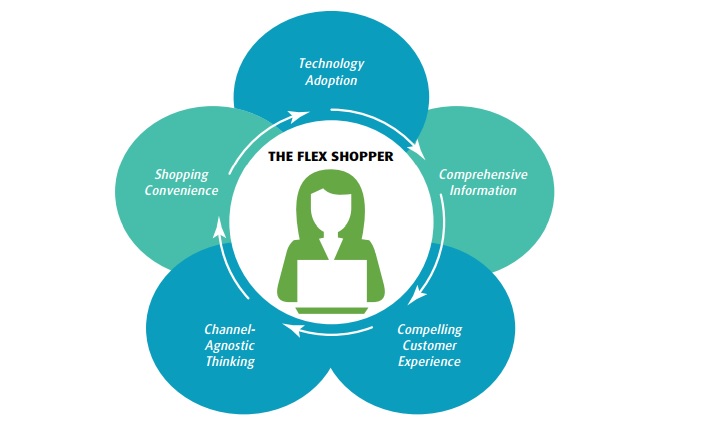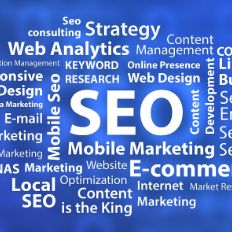How satisfied are you with your eCommerce sales performance? If you’re on the hunt for new ways to generate more traffic & sales, then it all start with improving your website’s user-experience.
Shoppers’ interaction with a website is the key to building a successful eCommerce business management strategy, and a secure and user-friendly online shop can easily harvest visitors’ trust and satisfaction. The fundamental principle that governs brick-and-mortar shops is also valid for online retailing: a happy customer is a loyal customer, and therefore a UX-focused approach is definitely rewarding for your business with more sales.
However, being UX focused doesn’t mean ignoring your revenue growth, and concentrating on the latter doesn’t mean compromising the first. By combining the two you’ll manage to keep your visitors engaged and entice them to convert!
In this guide, we’ll reveal the best UX and CRO practices that bring more sales for any ecommerce , so you can implement them & make your website more appealing and increase your sales performance.

eCommerce Basics: How UX & CRO Work for Sales

Both UX and CRO strategies are based on analytic data and website visitors input, and they’re both supported by website development design and function elements that help create a complete shopping experience for your customers.
User-experience refers to the overall impression each visitor has on your website, from the first click and all the way down to the last detail of the checkout process.
Based on how fast your website pages load, how easily users find what they’re looking for, how seamlessly they navigate from one page to another, and how straightforward the checkout procedure is, shoppers will determine how enjoyable their shopping experience was. Their first impressions can further determine if they are willing to come back for more or check out your competitors’ websites instead, to fulfill their expectations.
Thus, UX strategies are mainly customer-driven, focused on user’s intentions, preferences, and needs by means of achieving visitors expectations in all aspects:
- understanding users’ motivation of visiting your store
- their needs in terms of services and goods
- and simplifying the challenges they encounter in making an acquisition
UX vs UI
Many people understand user experience in terms of design, but user-interface (UI) and user-experience (UX) are not the same thing: while UI designers are focused on improving the looks of a website, UX designers concentrate on improving the feel of a website and its functionality.
UX vs CRO
On the other hand, CRO strategies concentrate on finding new ways of attracting customers to your website and transforming them into long-term and loyal customers, persuading website visitors to take an action and accomplish a business goal, such as:
- signing up for a newsletter
- downloading a brochure
- making a purchase
CRO strategies thus aim to increase the number of defined goals through user actions, but also to identify what makes users renounce a process or ignore a call to action. In this sense, the most common unfavorable actions for your business goals take place when your customers are abandoning a cart or renouncing their email subscription.
How User Experience Impacts CRO & Sales Performance

According to a Google 2016 study , more than 50% of the website’s visits are abandoned if pages do not manage to load in 3 seconds, and according to a Kissmetrics study, every second delay in page response results in 7% reduction in conversions.
This data shows not only that UX is an important metric for your business success, but also that today’s online shoppers have various options to easily find the best offer and satisfy their shopping interests.
This aspect raises a big challenge for eCommerce merchants in their attempt to be competitive, attract users’ attention and make them convert.
Since every eCommerce shop has a high interest in keeping their visitors engaged, a UX focused approach will attract your customers’ loyalty, and a good CRO strategy will help your business grow by increasing the number of users which are willing to make a purchase and come back for more.
Every step your visitors make on your website, from the first click and all the way through the purchase confirmation, influences their shopping experience and further determines their future actions on your website.
A negative experience will most likely make them renounce their shopping intentions and look for a better experience and better services somewhere else.
Conversely, an exceptional shopping experience will gain their trust and loyalty, and make them recommend your online shop to others, which, in turn, will generate even more revenue for your business.
Fundamentally, UX performance dwells on an intuitive approach to how your present your business to your website visitors. The key aspects are simplicity and efficiency.
From this perspective, a user-friendly website will be able to provide the basics:
- a seamless flow across from one page to another
- product page optimization in terms of copy, design, and functionality to increase conversion rates
- accessible add to cart button and a simple purchase process
Why UX & CRO Strategies Should Join Forces for a Better Shopping Experience

Although user experience and conversion rate optimisation strategies have different objectives, they can work one in each other’s favor aiming to achieve your business goals and satisfy your buyers.
Renouncing the UX focus in favor of a CRO-drive approach may result in having a user-hostile environment which in turn will cause high bounce rates.
On the other hand, renouncing a CRO focused strategy in favor of a UX-driven approach may result in having an attractive shopping environment that generates low conversion rates due to lack of engagement and purchasing actions.
A successful eCommerce strategy will take both approaches into consideration and make them work together to provide the best shopping experience for your customers while generating higher ROI for your business.
Joining UX and CRO strategies translate into setting up a digital performance management plan that can help you concentrate on your business key interests to increase your success.
While CRO strategies focus on increasing your conversion rate in all the processes which describe your user’s interaction with your website, from landing pages to checkout pages, UX strategies, on the other hand, are more focused on offering an effective and pleasant experience from the start to the end of the users’ journey. From this perspective it is only natural they go hand in hand.
In the next chapter, we present their main points of interaction and provide a checklist you can easily follow to improve your revenue.
Essential UX & CRO Guidelines for eCommerce Successful Stores

The convergence point between a user-experience focused strategy and conversion rate optimization strategy is understanding your buyers’ behavior in reaching for their shopping goals and measuring your site effectiveness rate in accomplishing those goals.
Particularly, this further means taking the following actions:
- Designing your eCommerce website to make it more user-friendly and keep your visitors engaged
- eCommerce website development checklist should also aim to meet the customers’ expectations in terms of functionality, personalization, security, information overload, and ease of navigation
- Analysing your website’s performance using Google Analytics to identify low traffic pages and pages that don’t convert
- Doing an eCommerce SEO site audit and optimizing your low performing pages to make them more site search friendly and attract more visitors
- Running customer research analysis through interviews, their profile analysis, and customer surveys to identify their needs and desires
- Running a competitor’s research analysis
- Adopting a content writing strategy to increase your organic traffic
- Optimizing your management flow aiming to enhance your processes and adopt more efficient strategies
- AB testing your website to see if your site’s improvements increase your conversion rates
Do you need additional guidelines and tips? Here are some guides to help you understand how to improve your eCommerce UX on each step:
- eCommerce Management Guide
- Workflow Management Guide
- Performance Optimization Guide
- SEO Guide for eCommerce Websites
Do’s and Don’ts UX Trends

eCommerce technologies continue to evolve and more shoppers choose to purchase services and goods via all devices, so being up to date with the latest shopping trends is an efficient way of staying ahead of your competition.
However, keep in mind that trends are transient and you don’t want to concentrate all your efforts in UX with the price of compromising your CRO strategy, that can also contribute to improving your sales performance.
Next, we’re going to list some UX trends that you want to avoid, and tips you can use to meet your customers’ needs and create an effective shopping environment.
eCommerce Website Design
When it comes to the ecommerce website design process, you should keep in mind that trends come and go, so adopting the newest trends that don’t also offer a plus in functionality seems to be an unprofitable investment.
There are a couple of trends that don’t always work well and may also slow down your website’s performance.
A few examples include poor implementation of:
- parallax scrolling
- automatic image sliders
- video backgrounds
- other UX trends that distract visitor’s attention from taking the desired action
Keep things simple and remember that it’s not always about how your website looks, it’s about how easily your customers can find what they need and how smoothly they proceed from desiring an item to purchasing it.
Thus, every element that appears on your product page or checkout page should, in the first place, offer support for users’ intentions, look appealing and make their actions easy to accomplish.
On the other hand, although minimalistic interfaces and limited text are correlated with a pleasant user experience, keep in mind that they’re not always a good option for eCommerce websites. As your ultimate goal is to get more conversions, you should provide enough data about your products and optimize it to persuade users to convert.
Improve Your eCommerce Website Copy
An attractive website doesn’t rely solely on the design elements. eCommerce content writing strategies that focus on clients needs are also important to boost your revenue.
Your website content is the core foundation of your brand and how you communicate your brand values, describe your product features, while sharing the necessary product information to your customers, has a great impact on your sales performance.
Start with an in-depth keyword research analysis to determine your visitors’ needs and goals and list all the necessary info it requires for them to get there.
Get to know your audience and find out how your target audience searches the online market for your niche products, how they describe them and what they value most.
Here are four key elements you need not neglect:
- Inform your clients about your product unique features and benefits of buying them
- Use powerful words to emphasize your brand core values
- Highlight how your products and services will help improve your client’s lifestyle
- Build a story around your brand to cultivate your values
To Increase Traffic & Sales, Improve Your eCommerce Website Functionality
eCommerce website development processes should always concentrate on the customer’s point of view. Building an intuitive navigation across your product categories and using filters are crucial elements your shop needs to provide to create an exceptional user experience.
When shoppers can’t find what they’re looking for, they easily lose their interest, and this is an opportunity you do not want to create for your competitors.
Having a logical category structure for your products is useful for users, but also crucial for bringing more visitors to your store by increasing the organic traffic your website receives via search engines.
Make sure your website’s structure is easy to browse by users and easy to crawl by search engines algorithms so you can benefit from a greater exposure in search engine results pages.
Having an intuitive site structure will make your site navigation easier for your visitors. Here are some quick UX tips to improve your shop navigation:
- Make every category page to be easily accessible with just a few clicks
- Allow users to know at any time where they are at and identify where they want to go
- Make it easy for them to place an order from any page they have landed on
- Make it easy for them to effortlessly jump from one product category to another
- Use breadcrumbs to allow them to keep track of their journey
- Make sure your product pages provide all the necessary data a user needs to place an order
- Always improve your page loading time to prevent page/site abandonment
We’ll talk more about eCommerce website best practices in terms of design, copy and functionality in the following two chapters, dedicated to designing product pages and checkout pages.
How to Design your Product Page for Conversions: Best Practices

There are multiple aspects contributing to product quality in customers’ eyes, from how it is presented on the product page, to how accessible it is to purchase it.
In this section, we’re giving away useful tips for designing the functionality your product page to help you improve your eCommerce shop’s UX and adopt the best practices to increase your revenue.
- Product selection
Usually, the more products you have, the better, but often enough too many products can create confusion and further have a negative impact on your sales performance.
If this is your case, then you should know that, far from being the key to success, having an enormous collection of products can drag down your sales performance.
Narrow down your product listings to help visitors avoid overthinking what to choose, and help them arrive more quickly at the final decision to buy.
This doesn’t mean that you should leave your most important products out, but to create a curated selection that works to your business advantage.
- Product cost
Regardless of your niche market, one of the most important aspects of every product is the product price.
It is worth mentioning from the start that, from user’s perspective, the price element should be highly visible on the product page.
A good practice is to specify the product price right near the product title or photo, at the top of the page. If it is the case, you should also mention additional features associated with the purchase that may influence the price. Shipping price should also be available on the product page and highly visible.
Avoid all hidden fees practices and keep in mind that a straightforward and transparent strategy will help you attract your target audience’s attention and earn your customers loyalty.
- Product images
Every product you sell should have an associated image that attracts user attention and provides additional information about the product, together with its description.
A good practice is to add a zoom feature to your images, thumbnails, and one scale representation of your product to help users have a better image of the product. Additionally, you can include action shots and product description schemes.
- Customer reviews
Another efficient way of building trust and gaining your customers’ loyalty is to allow them to express their impressions about your products and make their voice heard through reviews. Your brand can only grow through your buyers and if your products and services are high quality, then you shouldn’t worry about what they will say in their review.
Also, add a star rating to attract visitors attention and increase their loyalty, which in turn will boost your conversions.
- Out of stock data
Adding stock information on your product page is another practice that can help your sales grow, as it helps customers quickly decide to make a purchase.
- Upselling & cross-selling
Cross-selling strategies focus on providing customers an additional product to an initial offer in order to increase sales performance, but also to create a broader image for your brand.
On the other hand, closely related, is upselling, that focuses on recommending buyers to check out a more expensive, high-class, product that can be associated with an initial purchase.
Both strategies generate a high conversion rate, as long as you keep your tactics non-intrusive.
- Call to action
Each product page should contain a call-to-action, with the purpose of persuading your users to take an action, whether it is buying a product, subscribing to a newsletter or downloading a brochure.
Call to action copy, usually placed near the product price, should be easy to read and powerful, and it should point to the “add to cart” button or checkout page.
- Social sharing
Include a social sharing button to each product page, so users can find easy to share your products across their social network platforms. If you feel inspired, add a hashtag next to the product title to increase awareness.
These are the most common and efficient practices that can help increase your user-friendliness level when it comes to product pages.There’s always room for improvement, so be open to new trends while taking into consideration the what makes a good match with your brand and niche market, to efficiently attract your client’s attention and increase conversions.
Make Your eCommerce Checkout Page Close More Clients: Best Practices

Today’s shoppers are extremely efficient in searching for the best offer for their favorite services and goods and making a purchase across all devices, so they constantly browse for products and add their favorites to the cart, instead of adding them to the wishlist.
This is one of the reasons why checkout pages are the key point of making a good impression for your shoppers and determine if they’ll be willing to come back to your store to convert.
In this section, we’re giving away the best practices of designing the functionality your checkout page to help you improve your UX design and CRO performance.
- Personalization:
An Infosys study shows that 78% of eCommerce shoppers are willing to come back to your store if their purchase confirmation was personalized. One of the techniques you can use to personalize a purchase confirmation message is to display the cost in the client’s local currency and notify them in advance about their shipping costs. Additionally, you can make special offers and promote products related to their acquisition
- Unnecessary data:
A good strategy is to avoid at all costs asking for unnecessary personal information from your shoppers. If you have to, then break down the checkout process into stages in a simple process while showing your clients how the checkout procedure evolves and how many steps they should follow
- Mobile vs desktop:
Mobile and desktop users should have different checkout pages in terms of how the page is optimized. If for desktop users you have more space to list your checkout stages, keep in mind that mobile shoppers should have the essential things at hand. This means displaying more visible call to action buttons, a quick checkout procedure and a chance to save their cart for later purchasing
- Sign-up form:
Sign-up forms are almost always perceived as time-consuming actions and customers are not keen on losing their time and making an effort to fill in all the details. It is ideal to let visitors make a purchase before signing up or creating a profile and make sure you ask only for the personal details that are necessary and relevant to their purchase. Also, make sure you offer all the purchasing details before they proceed to buy an item (such as stock availability and additional fees) and don’t make them go through all the checkout procedure steps before finding out if they can or are willing to make the purchase
- Order change:
Allow users to modify their order, by deleting or changing the products they have added to their cart
- Checkout support:
Provide real-time-support for your shoppers and personal assistance, to prevent users from dropping their cart if they get stuck at one stage of the checkout process
Closing Thoughts

The most successful eCommerce businesses have one thing in common: they have realized that customers’ loyalty is based on the efforts of creating an experience that serves their buyers needs in a secure environment and an efficient way, at the best cost per quality score.
To achieve surprising results, you need to keep in mind the following key elements that contribute to an exceptional UX:
- Identify your visitors’ intentions and understand their preferences
- Know your customers shopping patterns
- Design and follow strategic CRO actions
- Monitor clients level of satisfaction by asking for their feedback
- Constantly improve your services based on your clients’ needs and desires
- Aim to deliver a consistent experience
Contact an expert to discuss about your eCommerce sales needs!



